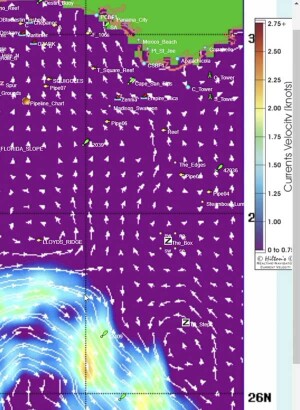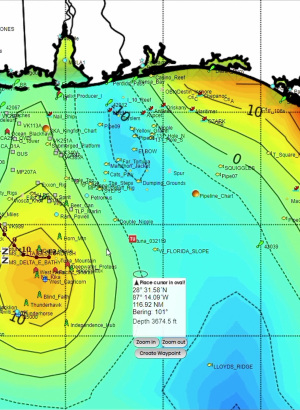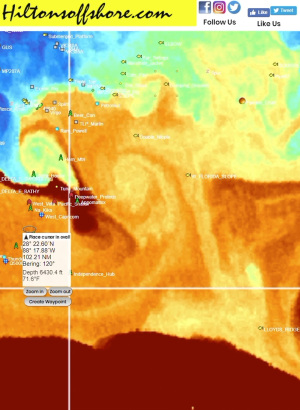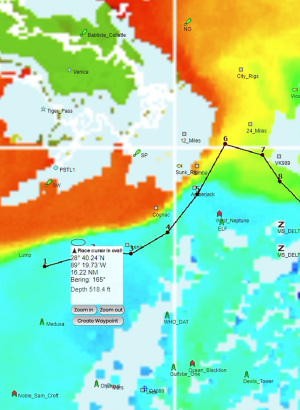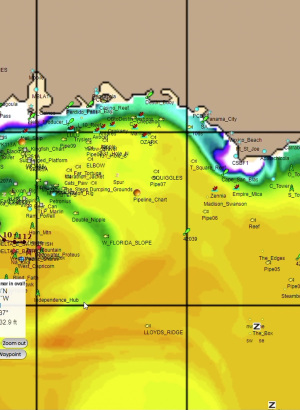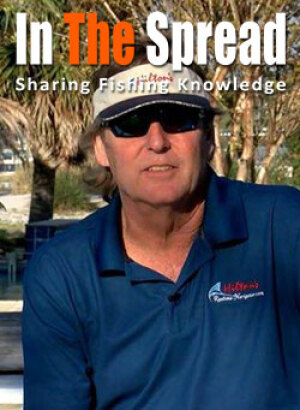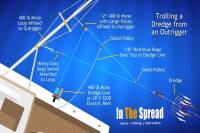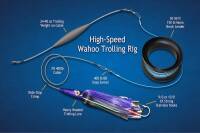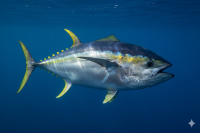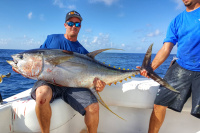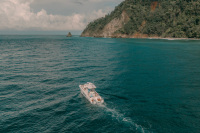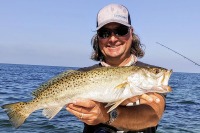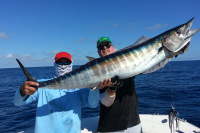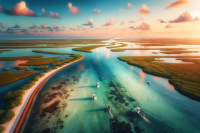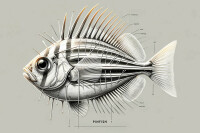Modern fishing forecasts combine satellite data with environmental conditions to predict prime fishing opportunities. Learn how to interpret sea temperatures, chlorophyll levels, and weather patterns to locate fish more efficiently and transform your angling success with techniques once available only to commercial fishermen.
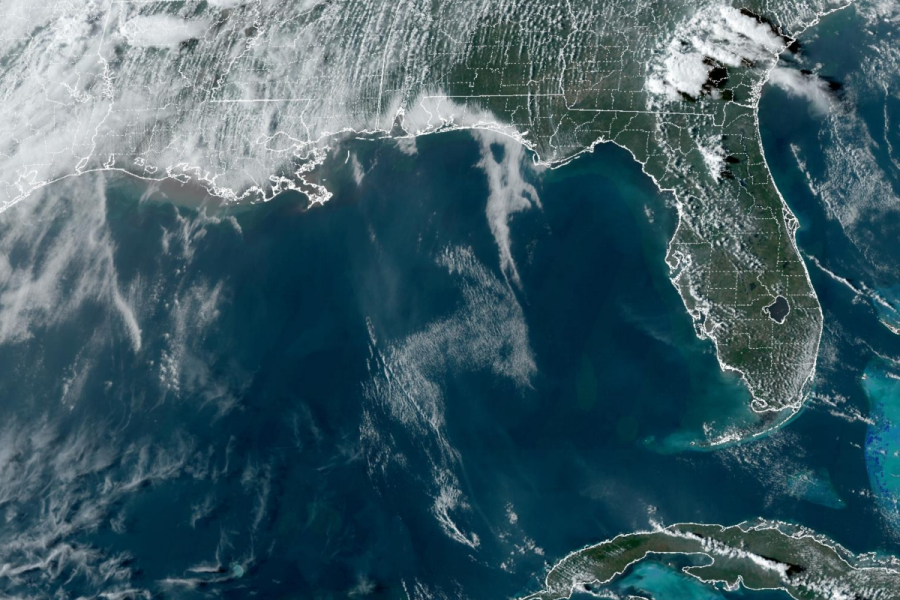
Advanced Fishing Forecast Tips and Tools
Crafting a Productive Fishing Forecast
In the world of angling, the difference between a successful day on the water and coming home empty-handed often comes down to being in the right place at the right time. While luck plays a role, modern fishermen increasingly rely on science-backed fishing forecasts to maximize their chances of success. This evolution from folklore and almanacs to sophisticated satellite data has transformed fishing from an art to a science-informed pursuit.
The Foundation: Key Data Points for a Fishing Forecast
Weather Conditions: The Starting Point
Weather remains the most fundamental variable in any fishing forecast. Beyond ensuring safety on the water, weather patterns directly influence fish behavior through several mechanisms:
Barometric pressure might be the most significant weather factor affecting fishing success. Fish, with their sensitive air bladders, detect even slight pressure changes. Falling pressure before a storm often triggers feeding frenzies as fish instinctively know that turbulent weather might limit feeding opportunities. Conversely, high, stable pressure typically results in more challenging fishing conditions as fish become less active. Learn more about how barometric pressure affects fish behavior.
Wind direction and speed create both challenges and opportunities. Onshore winds push warmer surface water toward shore, often bringing baitfish along. Offshore winds have the opposite effect, sometimes triggering upwellings that bring cooler, nutrient-rich water to the surface. For freshwater anglers, wind-blown shorelines frequently concentrate food, attracting feeding fish.
Air temperature affects water temperature, particularly in shallower bodies of water, influencing fish metabolism and activity levels. Cold fronts can shut down fishing almost immediately, while gradual warming trends typically enhance activity.
Tides and Currents: The Driving Force of Movement
For saltwater anglers, understanding tidal movements is perhaps the single most crucial factor in creating accurate fishing forecasts. Tides generate current, which serves multiple functions in the marine ecosystem:
Tidal currents create feeding opportunities by concentrating baitfish and disorienting prey species. The periods of strongest current flow—typically the first part of incoming and the last hour of outgoing tide—often coincide with increased feeding activity as predatory fish take advantage of these conditions. The adage "no tide, no fish" contains considerable truth.
The difference between high and low tide—the tidal range—affects access to different fishing grounds and determines which underwater structures will be most productive. During spring tides (around new and full moons), the more extreme water level changes can create exceptional fishing in previously inaccessible areas.
For freshwater anglers, especially those fishing rivers and streams, current remains important but stems from water flow rates rather than tidal influence. Dam releases, rainfall runoff, and seasonal patterns all affect current strength and direction in rivers.
Sea Surface Temperature (SST): The Fish Migration Highway
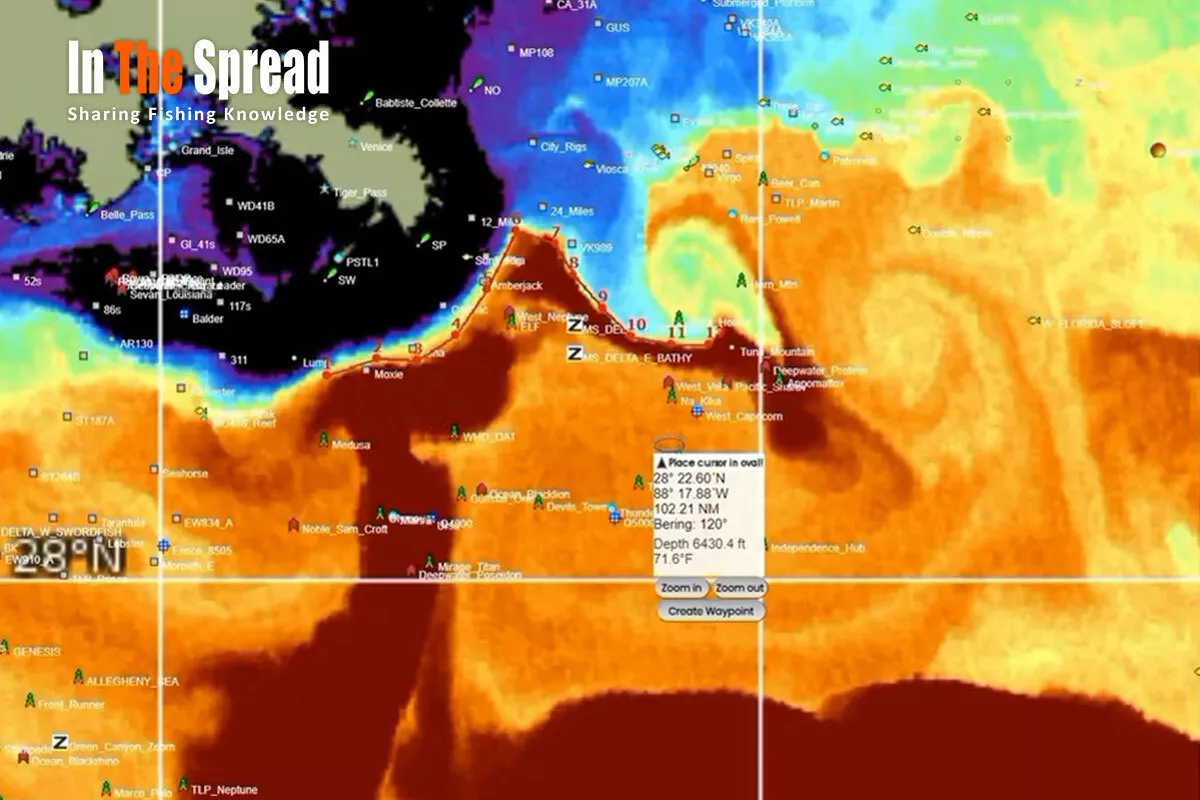
Water temperature fundamentally influences where fish position themselves, particularly in larger bodies of water where temperature variations create distinct zones:
Temperature breaks, areas where water temperature changes rapidly over a short distance, act as concentration points for marine life. These thermal boundaries often align with current edges, creating feeding zones where baitfish and predators congregate. Offshore anglers targeting pelagic species like tuna, marlin, and mahi-mahi consider temperature breaks essential waypoints.
Seasonal temperature patterns drive fish migrations and behavior. Understanding the preferred temperature range of target species allows anglers to predict movement patterns throughout the year. For example, striped bass migrate based on water temperature preferences, seeking the 55-68°F range as they move up and down the Atlantic coast.
Upwelling areas where deep, cold water rises to the surface bring nutrient-rich water that stimulates plankton growth, attracting baitfish and, subsequently, larger predators. These upwellings often occur where currents interact with underwater structures like continental shelves or seamounts.
Chlorophyll-a Levels: The Base of the Food Chain
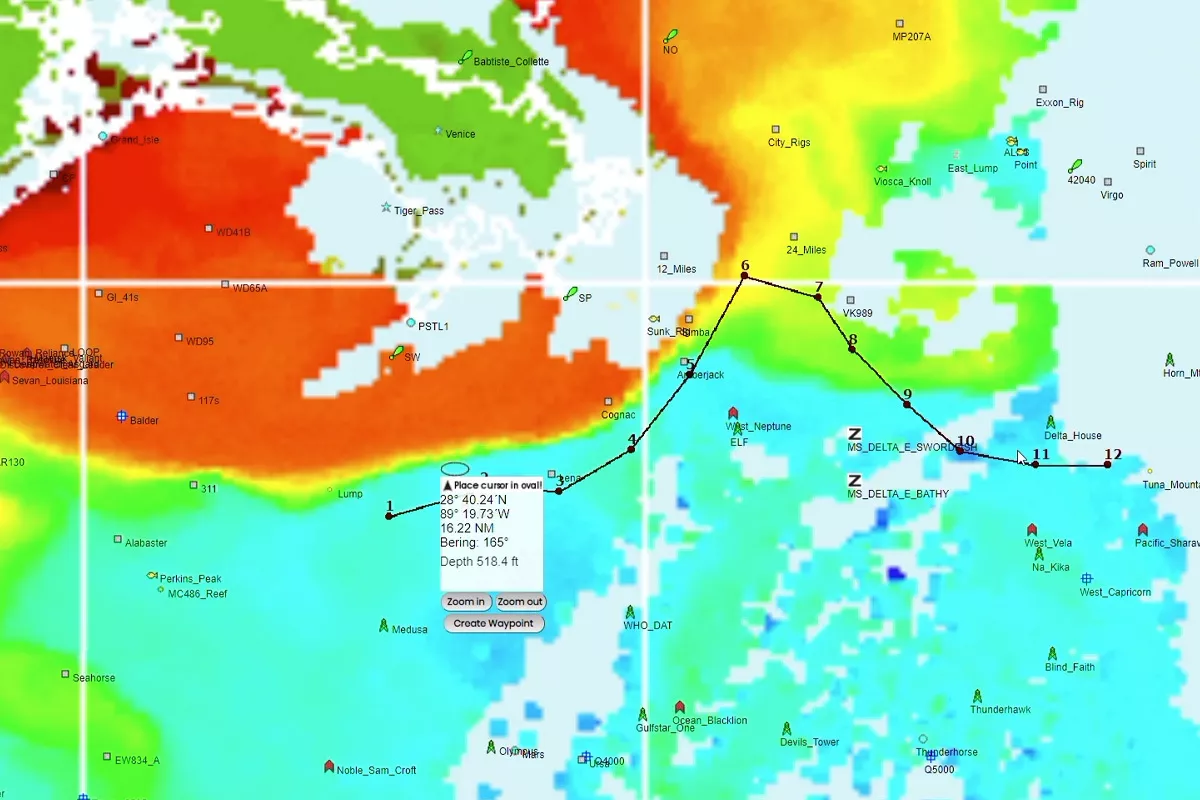
The concentration of chlorophyll-a in water serves as a proxy for phytoplankton abundance, the foundation of the marine food web:
Higher chlorophyll levels indicate plankton blooms that attract baitfish and, subsequently, predatory fish. These areas appear as green patches on satellite imagery and often represent highly productive fishing grounds, particularly for species that feed on plankton-eating baitfish.
The edges between high and low chlorophyll concentrations, like temperature breaks, create boundaries where predators hunt more actively. These chlorophyll fronts often align with other oceanographic features, creating fishing hotspots.
The relationship between chlorophyll levels and fishing success varies by species and region. Some gamefish prefer clear, blue water adjacent to chlorophyll-rich green water, using the boundary as a hunting zone rather than staying within the plankton-rich areas themselves.
Altimetry (Sea Surface Height): Finding the Ocean's Highways
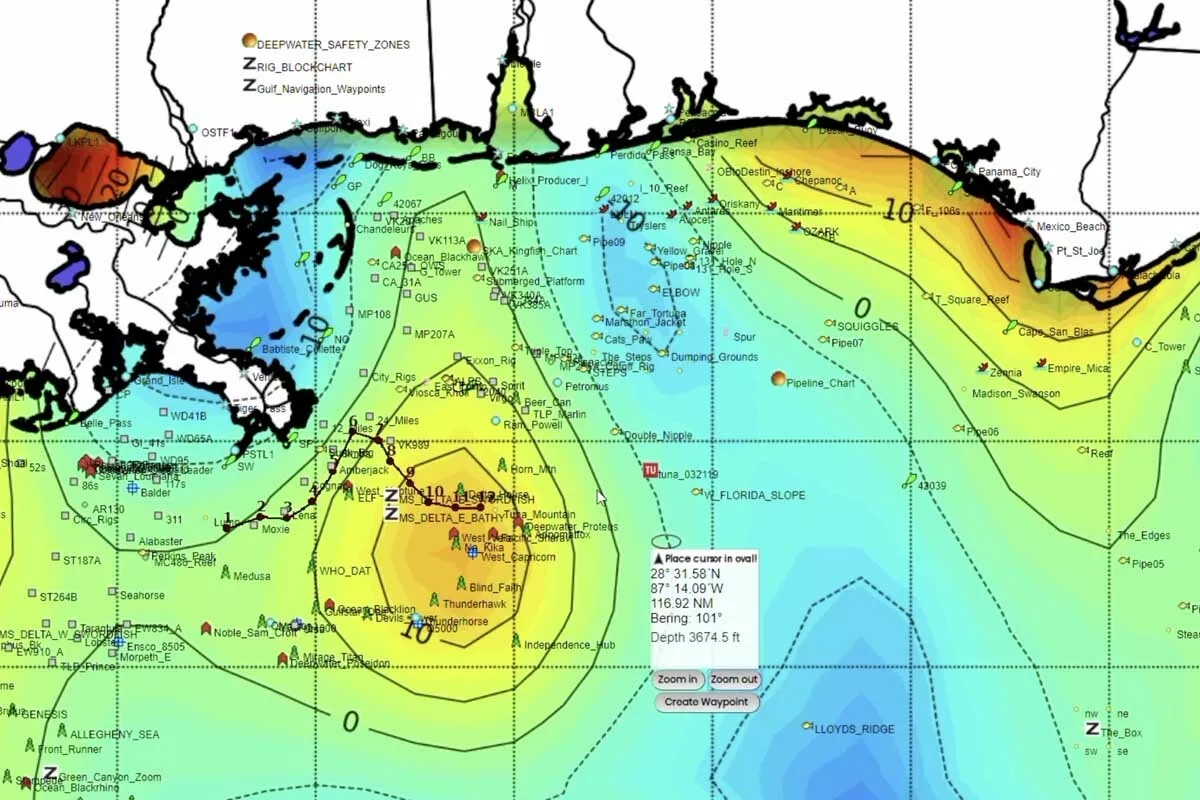
Sea surface height anomalies might be the least understood yet incredibly valuable predictor of good fishing locations, particularly for offshore anglers:
Altimetry data reveals eddies—circular currents that break off from major ocean currents. These spinning water masses create distinct ecosystems, concentrating nutrients and marine life. Warm-core eddies (spinning clockwise in the Northern Hemisphere) typically hold different species than cold-core eddies (spinning counter-clockwise), allowing targeted fishing approaches.
Upwelling and downwelling zones identified through altimetry data show where nutrient-rich water rises from depths or where surface water sinks. Upwelling areas, in particular, create productive fishing grounds as they stimulate the food chain from the bottom up.
The convergence of currents, often visible in altimetry data, creates productive zones where water masses with different characteristics meet, concentrating baitfish and attracting predators.
Moon Phases and Solunar Activity: Celestial Influences
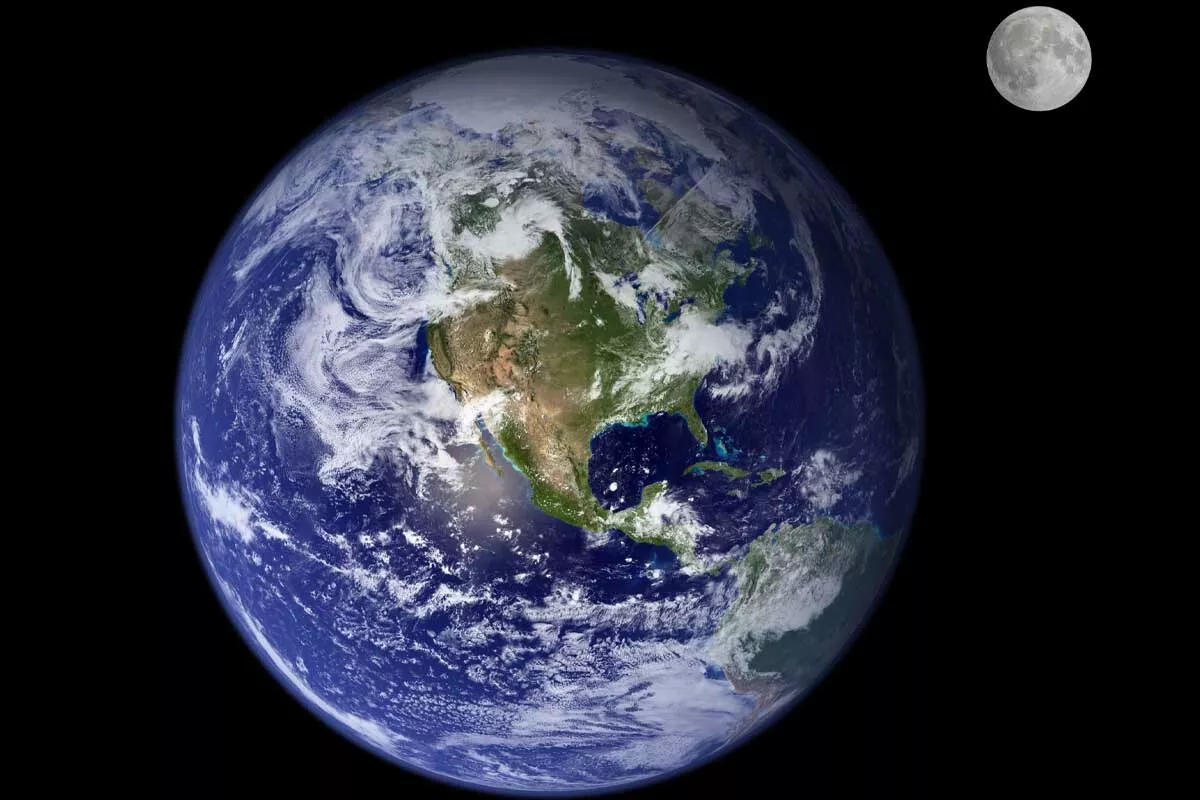
The gravitational forces of the sun and moon affect tides and potentially fish behavior directly:
Major and minor feeding periods predicted by solunar theory suggest peak activity times based on the positions of the sun and moon. Many anglers report increased success during these windows, particularly during the "major" periods.
Moon phases influence tidal range, with new and full moons creating stronger "spring" tides and first/third quarters creating weaker "neap" tides. The stronger currents during spring tides often trigger more aggressive feeding behavior.
The relationship between moon phase and fishing success varies by species. Some species show clear correlations with lunar cycles, while for others, the connection is less pronounced or masked by other environmental factors.
Bottom Structure: The Permanent Attractors
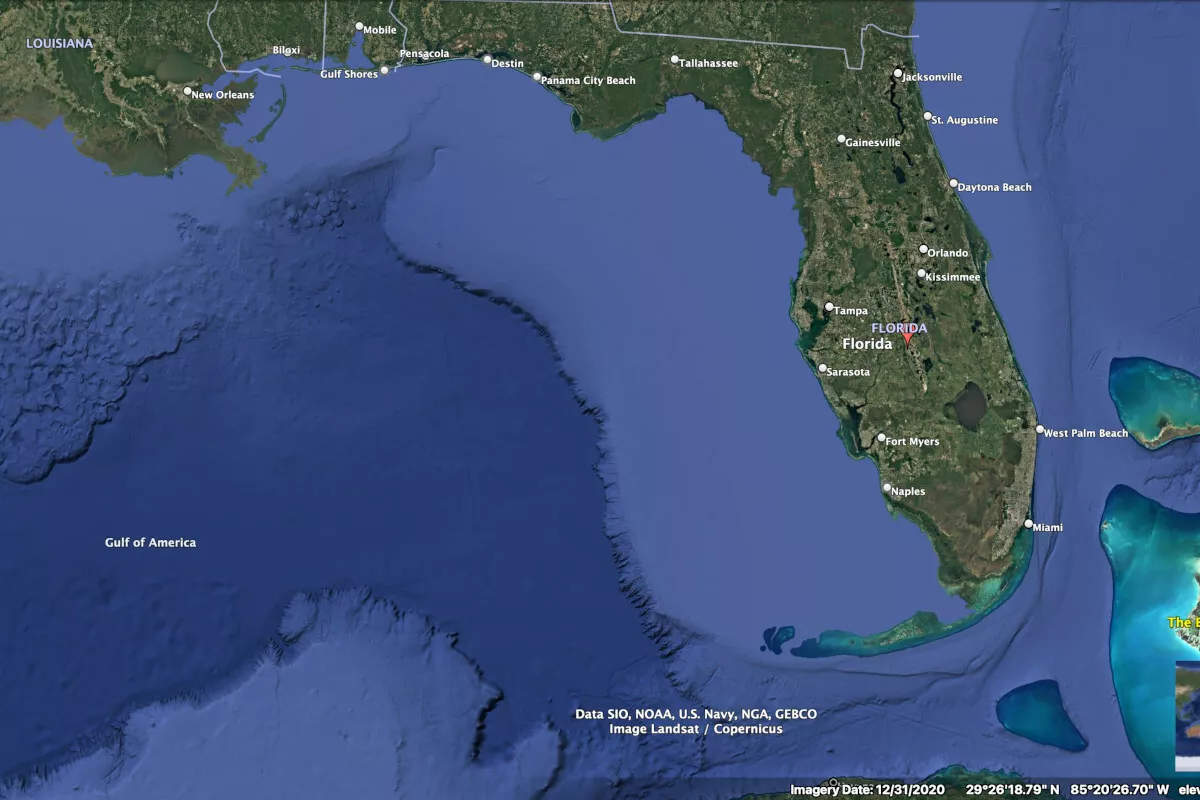
Regardless of other conditions, underwater structure creates habitat that consistently holds fish:
Reefs, ledges, seamounts, and other bottom features create ecosystems that attract and hold fish year-round. These structures provide shelter, feeding opportunities, and current breaks that fish exploit.
The interaction between structure and current often determines fish positioning. During strong currents, fish typically hold tight to structure in "eddy" areas that reduce current exposure while allowing them to dart out to feed on passing baitfish.
Seasonal patterns related to structure use change throughout the year. Some structures prove most productive during migration periods, while others hold resident fish consistently.
Differences Across Environments: Tailoring Your Approach
Freshwater Fishing Forecasts
Freshwater fishing environments respond more quickly to local weather conditions than oceanic systems:
Water temperature in lakes and rivers fluctuates more dramatically with air temperature changes, making weather forecasts particularly important for freshwater anglers. Even a few degrees change can trigger or shut down activity.
Seasonal patterns like spring spawns, summer thermoclines, fall turnover, and winter stratification create predictable changes in fish location and behavior throughout the year.
Dam releases and water level fluctuations significantly impact river fishing. Rising water often improves fishing as it washes food into the system, while rapidly falling water typically suppresses activity.
Saltwater Fishing: Inshore
Inshore saltwater fishing environments blend characteristics of both freshwater and offshore systems:
Tidal movements dominate inshore fishing patterns. The flow of water across shallow flats, through channels, and around structure creates feeding opportunities that savvy anglers exploit.
Wind direction relative to shorelines creates varying conditions in different areas. Onshore winds might make beach fishing difficult but can improve bay fishing by pushing baitfish toward shore.
Bottom structure and shoreline features like points, coves, and creek mouths create predictable holding areas for fish, particularly during specific tidal phases.
Saltwater Fishing: Offshore
Offshore saltwater fishing environments require a broader perspective, often incorporating data covering hundreds of square miles:
Temperature breaks, chlorophyll fronts, and altimetry data take precedence in offshore forecasting. These large-scale oceanographic features create productive zones that concentrate pelagic species.
Ocean currents, particularly major systems like the Gulf Stream, create highways that migratory species follow. Understanding current patterns helps offshore anglers intersect with these migrations.
Weather windows become crucial for offshore planning, with sea conditions determining not only fishing success but also safety and comfort.
Real-Time Tools: Turning Data into Action
FishTrack
FishTrack combines multiple satellite data sources into a user-friendly platform focused on offshore fishing:
The service provides detailed sea surface temperature charts with clear color coding to highlight temperature breaks and gradients. Users can adjust temperature ranges to focus on species-specific preferences.
Chlorophyll overlays allow anglers to identify productive areas and the edges between clear and plankton-rich water where predators often hunt.
Current mapping helps identify convergence zones and eddies where baitfish concentrate.
Hilton's Realtime Navigator
As the pioneer in oceanographic data for recreational fishing, Hilton's offers sophisticated analysis tools:
The service specializes in altimetry-driven eddy tracking, helping anglers locate these productive oceanographic features.
Temperature and chlorophyll gradient mapping identifies the edges between different water masses where feeding activity often concentrates.
Historical data comparison allows users to identify patterns and seasonal trends that might not be apparent in single-day snapshots.
RipCharts
Tournament anglers particularly value RipCharts for its comprehensive approach:
High-resolution SST and chlorophyll maps provide precise location data for temperature breaks and color changes.
Altimetry overlays help identify upwellings, downwellings, and current edges that might hold fish.
Predictive modeling suggests how oceanographic features might change in the coming days, allowing for advance planning.
BassForecast
Freshwater bass anglers benefit from BassForecast's species-specific approach:
The platform analyzes seasonal bass patterns based on water temperature, weather conditions, and time of year.
Bait recommendations suggest the most effective lures and presentations for current conditions.
Solunar timing highlights the best fishing windows throughout the day.
Fishbox
Novice anglers appreciate Fishbox's straightforward approach:
The app provides 7-day outlooks with simple color-coded activity levels based on environmental data.
User-friendly interfaces avoid overwhelming new anglers with technical data.
Creating a Unified Forecast: The Integration Approach
The most effective fishing forecasts combine multiple data sources into a cohesive prediction:
- Begin with safety considerations by checking weather forecasts for suitable conditions. Even the most promising fishing forecast means nothing if wind and seas make fishing uncomfortable or dangerous.
- Identify the optimal tide phase for your target species and fishing location. For most inshore fishing, moving tide (either incoming or outgoing) outperforms slack tide periods.
- For offshore trips, overlay SST and chlorophyll maps to locate productive zones where temperature and water clarity conditions align with your target species' preferences.
- Add altimetry data to pinpoint eddies, upwellings, and current edges that might concentrate baitfish and predators beyond what temperature and chlorophyll data alone reveal.
- Cross-reference these oceanographic features with known bottom structures like reefs, ledges, and seamounts. The combination of favorable water conditions with productive structure often creates fishing hotspots.
- Time your trips to align with solunar major and minor periods when possible, particularly when other conditions appear marginal.
- Validate your predictions with local knowledge, fishing reports, and historical patterns from your fishing log. Satellite data provides powerful insights, but local expertise remains invaluable.
Advanced Strategies for Maximum Success
Serious anglers can further refine their approach with these advanced techniques:
- Track multi-day trends rather than single-day snapshots. The direction and rate of change in conditions often predict fishing success better than absolute values. Rising water temperature typically improves fishing more than stable warm water, for example.
- Maintain detailed fishing logs that correlate catches with environmental conditions. Over time, patterns emerge that reveal the specific combinations of factors that produce success for your target species in your home waters.
- Develop the ability to interpret satellite data in real-time. Services like InTheSpread.com teach anglers to analyze oceanographic information independently rather than relying solely on preprocessed fishing forecasts.
- Look for convergence of multiple positive factors rather than focusing on a single condition. When tide, temperature, structure, and solunar period align, exceptional fishing often results.
- Remain adaptable and willing to adjust plans based on changing conditions. The best fishing forecasts represent probability rather than certainty, and on-water observations sometimes contradict predictions.
The Future of Fishing Forecasts
As technology continues to advance, fishing forecasts will become increasingly sophisticated:
- Machine learning algorithms have begun incorporating historical catch data with environmental conditions to identify patterns human analysts might miss. These AI-driven approaches promise even more accurate predictions.
- Mobile technology now delivers complex satellite data directly to anglers on the water, allowing real-time adjustments to fishing plans as conditions change.
- Crowdsourced data from fishing apps creates new layers of information, combining environmental data with actual catch reports to refine predictions.
- Integration with marine electronics allows seamless transfer of fishing forecast data to onboard navigation and fish finding systems, creating unified interfaces for modern anglers.
Looking Forward From Data to Success
The modern angler has unprecedented access to fishing forecast tools that combine satellite technology, oceanographic data, and weather information. By understanding how to interpret and integrate these data sources, today's fishermen can make informed decisions that maximize their time on the water.
While technology has transformed fishing forecasting, successful anglers still blend these advanced tools with experience and intuition. The art of fishing hasn't disappeared—it has evolved to incorporate scientific understanding that enhances rather than replaces traditional knowledge.
Whether you're a tournament professional seeking a competitive edge or a weekend warrior trying to make the most of limited fishing time, learning to craft productive fishing forecasts will lead to more consistent success and a deeper appreciation for the complex underwater world we seek to understand.
Resources like In The Spread help bridge the gap between raw data and practical application, allowing anglers to translate scientific information into fishing success through specialized education designed specifically for recreational fishermen.
Login
to leave a review.
User Reviews
There are no reviews yet.Complete Dredge Pulley Setup Guide
Saltwater
12.28.2020
High Speed Wahoo Trolling Rig
Saltwater
09.07.2018
Best Bait for Wahoo
Saltwater
12.30.2023
Pinfish - A Comprehensive Guide
Saltwater
11.10.2023
0

